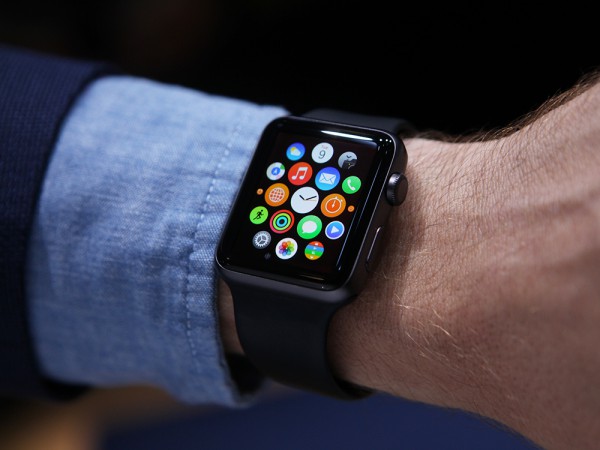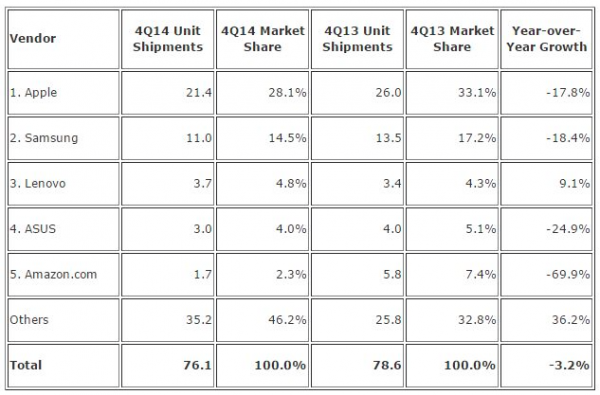Last October, we wrote a piece about tech trends to keep an eye on in 2015: mobile payments and digital wallets, smartwatches, and the decline of tablets. Six months down the line, we wanted to see how we did.
Mobile Payments
We predicted that mobile payments and e-wallets like Apple Pay and Google Wallet were going to be all the rage in 2015 because:
- Apple Pay had just been announced
- Apple Pay was being installed into brick-and-mortar stores at a faster and more exhaustive rate than any other similar product had before
We didn’t do so well on this one. Yes, as predicted, we’ve seen extensive proliferation of digital wallet solutions to counter Apple Pay, probably most prominently CurrentC, the mobile solution of Wal-Mart, Rite Aid, CVS, and their assorted retail friends.
However,
the turf war between retailers and credit card companies has actually stunted mobile payment market penetration. Mobile wallets are like a social network – they only work if everyone gets on board, and the continuing fight between CurrentC and the credit card companies, manifested as Google Wallet and Apple Pay, stops that from happening.
The second challenge for mobile payment adoption is the inability of providers to guarantee a basic level of security, which has ended early adopter enthusiasm.
Following a string of hacking incidences from all over the digital world, people are more aware than ever that the online world isn’t necessarily a safe one, and mobile payment solutions like CurrentC and Apple Pay had done a poor job of reassuring consumers that their information will be safe. (This wasn’t helped by
CurrentC being hacked last October).
In
real number terms, this is what adoption looks like:
- 5 weeks after launch (Black Friday 2015) 95% of transactions that could have been completed with Apple Pay weren’t. In the same time period 96% of people who could have used Apple Pay hadn’t even looked at it to give it a try.
- In March 2015, 6% of potential users actually used the service and 9% of people had tried it (but were sporadic)
- 85% of potential users hadn’t even tried to use the service at all
As 2015 marches on, we might see a change in these figures that suggests more and better mobile payment and digital wallets. Let’s be honest – it’s a forgone conclusion that eventually mobile payments will be a viable payment option. But it’s till a long way off, and with adoption levels like those shown above, we weren’t quite spot on with this one.
The smartwatch market will expand

The smartwatch market, on the other hand, continues to grow as users continue to trade up their boring old time telling watches to new, better, feature-rich smart ones.
The evidence
Basically, when Apple announced in late 2014 that they were building the Apple Watch, it galvanized the entire smartwatch industry not only to lift their game (which they did) but also pushed smartwatch sales through the holiday season. It’s led to projects like
51 million smartwatches will be sold by the end of 2015.
So yes, we maintain that smartwatches, at the cost of other products like
Google Glass, will dominate the wearables market.
Decline of the tablet

We’re sticking to this one. First,
Q4 2014 saw the first ever year-over-year decline in tablet sales, with a 3.2% decline overall. However, if you split those numbers out by major brand, it tells an even more revealing story.
- Apple sales decreased by 17.8%
- Samsung sales decreased by 18.4%
- Amazon sales decreased by 69.9%
Other minor tablet companies and companies with better penetration in overseas markets (especially China) saw an
increase in sales over Q4 2013 by 36.2%, with Lenovo (with their presence in the Asian markets) growing by 9.1%
What these numbers mean is that the incumbent companies like Apple and Samsung are not convincing people that their products are worth the extra money compared to cheaper alternatives. In part, it’s because tablet sales are moving away from the higher income consumers, who would rather spend their money on a great phablet or other add-on tech like a smartwatch. Another likely cause (
pointed out in the comments on our last post ) is that Apple, Samsung, and Amazon haven’t done a very good job of convincing consumes that it’s worth their money to upgrade to a better tablet.
The result is that the normal tablet market is both saturated and there’s increased competition from other devices, meaning less tablets get sold. The new tablet market is lower income folks, largely in the BRICS countries (Brazil, Russia, India, China, and South Africa), who are looking for brands they know (like Lenovo) and less expensive alternatives to the premium options provided by Apple and Samsung.
All in all, we stand by our prediction, but want to tack on an amendment – tablet sales, in addition to decreasing, will move to a lower price point, with the majority of sales being in the BRICS countries.
Conclusion
We didn’t get it all right. Yes, smartwatches do look like they’re going to explode in 2015, ushered into sales by the
Apple Watch announcement in Q4 2014 and its sale at the end of Q1 2015.
And yes, tablet sales will continue to decrease, as well as moving towards lower prices and hitting a lower market, with some growth in discount devices but the incumbent brands continuing to suffer.
However, mobile payments are looking a little ways off. To be successful, the industry has to get all its ducks in a row and present consumers with a single, high quality universal experience. Also, the industry needs to improve its security and more importantly better articulate to consumers why their products are safe.
All in all, 2015 is going to be an exciting time for tech. Let’s see how we get on!
